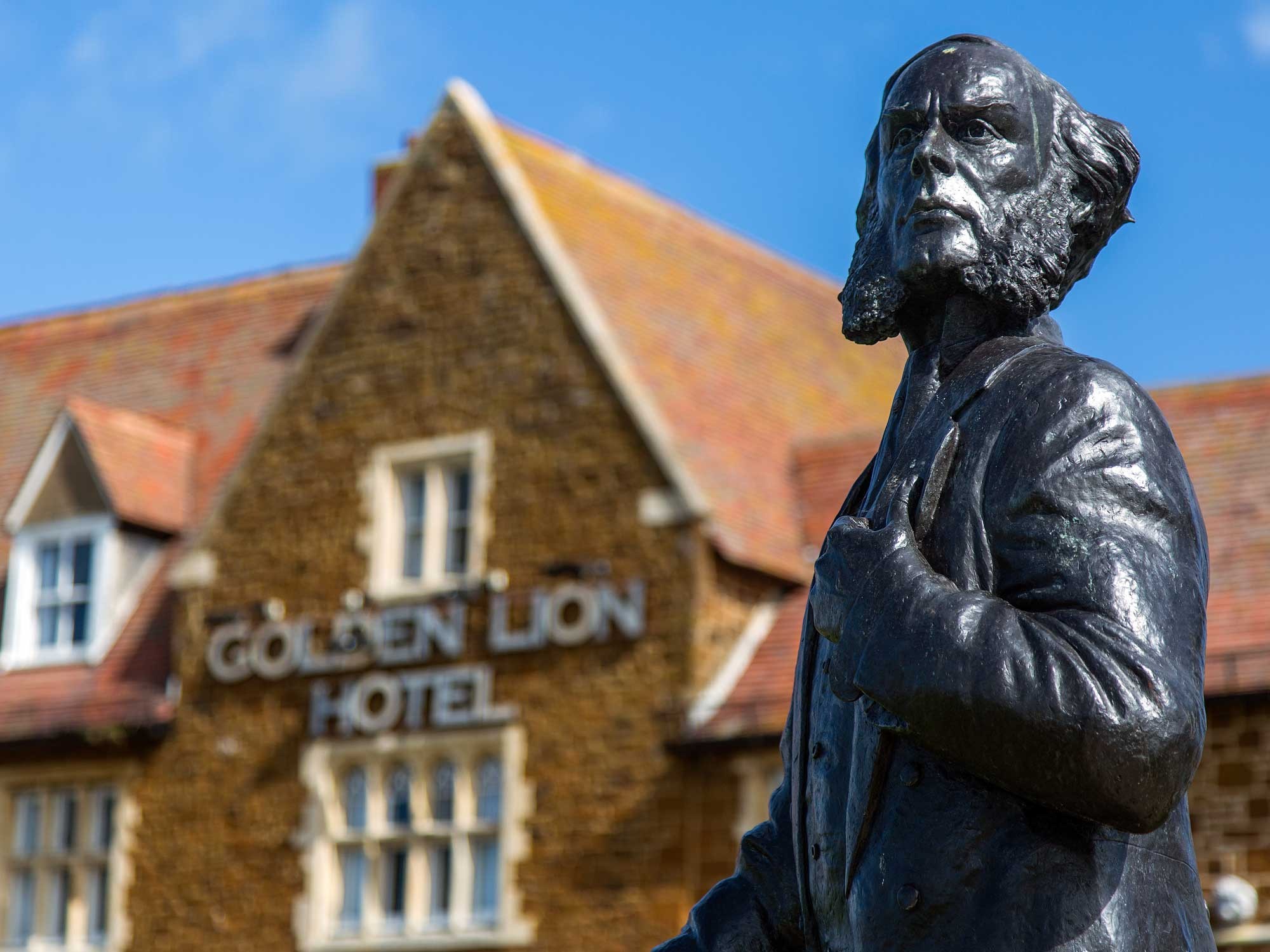
Paying tribute to the man who created Hunstanton
In the mid 19th century, Henry le Strange had the vision of a new seaside resort on the coastline of west Norfolk and is memorialised with a life-size statue overlooking the town he designed
The imposing figure of Victorian entrepreneur Henry Styleman le Strange stands on the town’s famous Green, his life-size bronze statue proudly looking out to sea as he surveys the hustle and bustle of activity in the resort he was motivational in creating during the mid-19th century.
Without the vision, enthusiasm and determination of le Strange, Sunny Hunny as it’s affectionately known wouldn’t be the popular seaside town it is today, attracting thousands of holidaymakers and day-trippers every summer.
Le Strange, a nobleman reputed to be a kind landlord, considerate master to his employees, liberal patron and generous benefactor to Hunstanton, is a name on the lips of many townsfolk. Hunstanton resident and Civic Society member Brian Holmes was the man behind the idea of a £40,000 statue to celebrate the significant contribution le Strange made to the development of Hunstanton as a resort.
Local businessman William Searle raised £12,00 from donations towards the costs of the statue and there was a £20,000 grant from the Lottery-funded Hunstanton Heritage Gardens project – with a further £8,000 coming from the Borough Council of King’s Lynn and West Norfolk.
The statue, which stands on the town side of the Green which slopes down to the promenade and sea, depicts le Strange as a Victorian gentleman resplendent in a well-tailored suit, and was designed and made by artist Alan Herriot – one of Scotland’s most successful figurative sculptors and someone who’s no stranger to west Norfolk. In 2016 he produced the statue of King John that now stands in the centre of King’s Lynn.
“It’s a great honour for the le Strange family to have the founder of Hunstanton recognised in this way,” says Michael Meakin from the le Strange Estate. “The statue is a permanent reminder of the man whose vision created the town.”
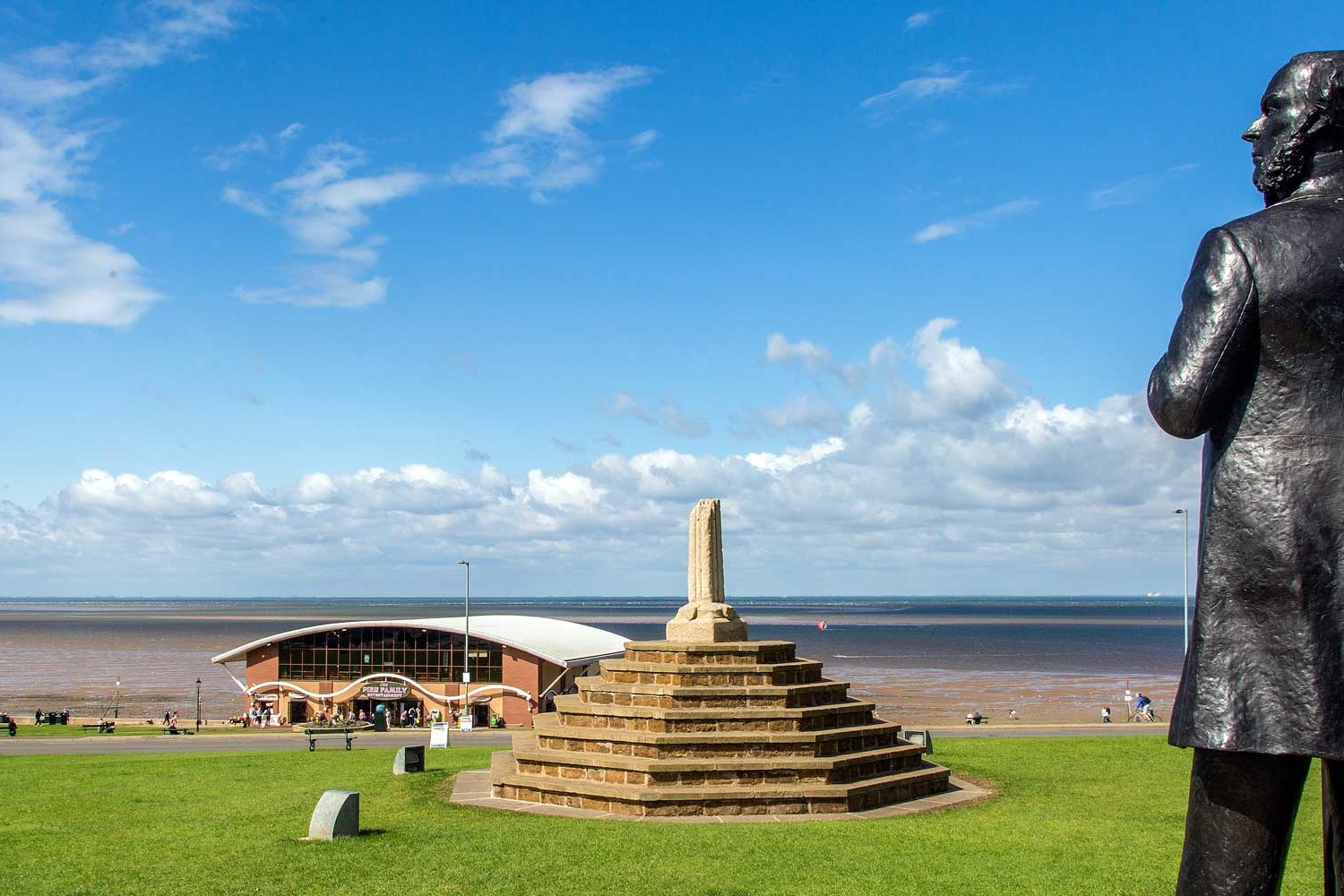
In her memoirs, Henry le Strange’s eldest daughter Ina wrote that during her childhood the family enjoyed using a small fishing lodge on the marshes to the north of Heacham, a favourite location for them during the summer.
“There was not a building of any sort between Hunstanton lighthouse and Heacham village,” she wrote. “So empty was that long stretch of shore that father and Mr Charles Bagot, who often stayed with the family at Hunstanton Hall, used to walk over the new Park and fields in a beeline down to the shore and bathe before breakfast in the summer and not see a soul.”
In 1840 le Strange could see the potential of this charming corner of his Estate. It has a picturesque coastline with a favourable aspect facing towards the Wash, bracing sea-air and a plentiful supply of fresh fish and shellfish.
In addition, there were colourful cliffs at the northern end graduating to sand dunes in the south, fringed by a sandy beach dotted with rocks.
He considered such a location could well be as attractive to visitors as the increasingly fashionable seaside watering-places found elsewhere on the British coastline. But he also realised such visitors coming to Hunstanton would need accommodation.
His search ended in a sloping grassy meadow running down to the sea where the cliffs met the dunes, and he decided the site would be the centre of the new seaside town; which was originally called St Edmunds in honour of the saint whose chapel stood nearby.
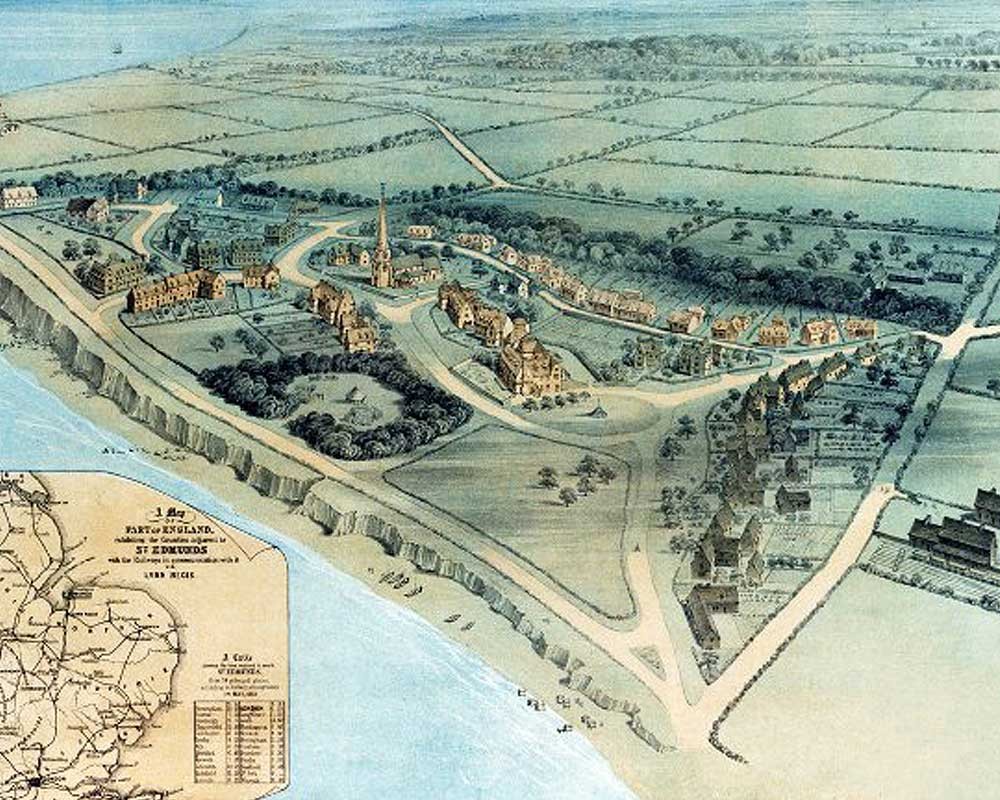
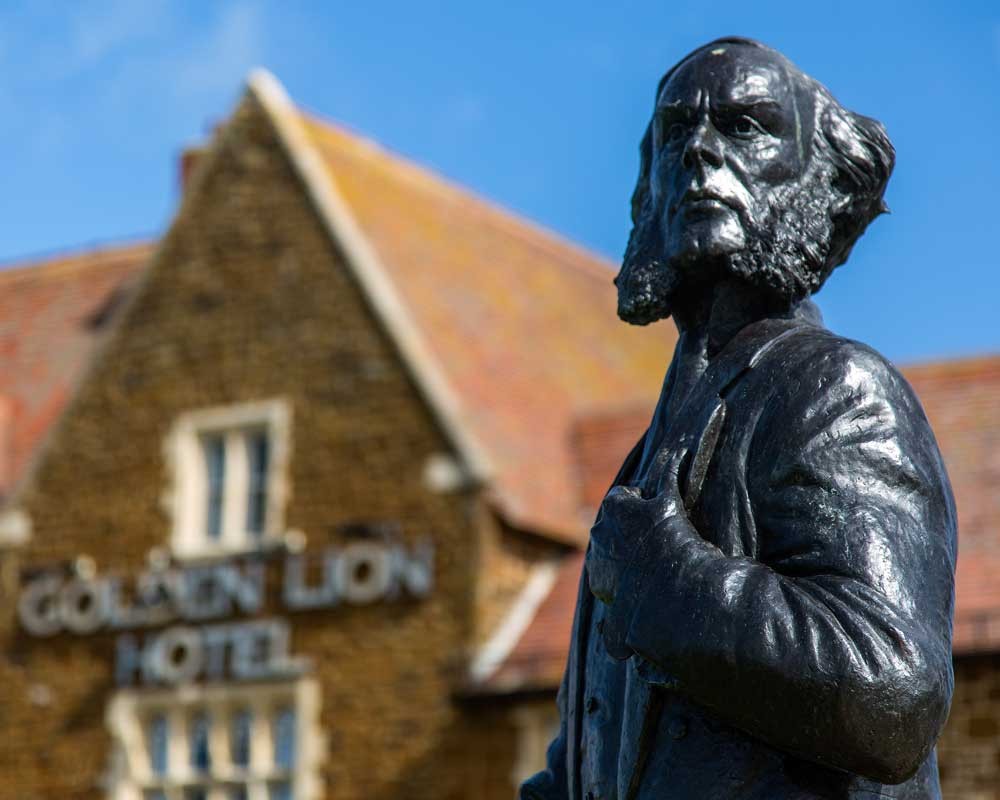
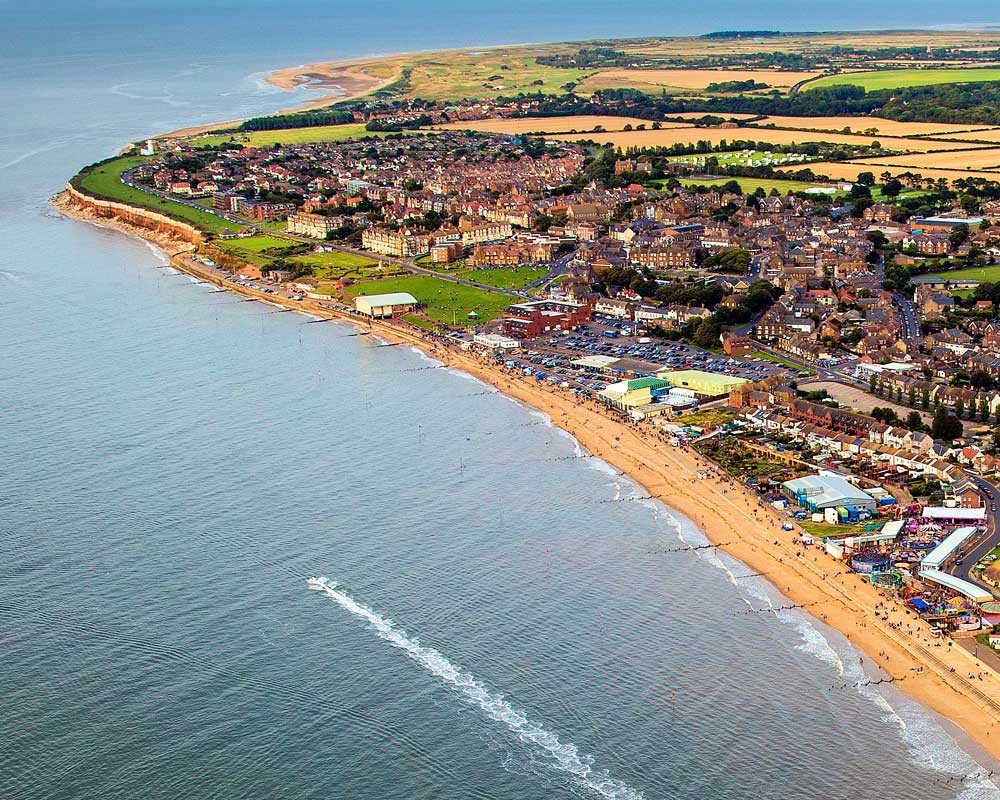
Henry began his great venture by engaging one of the leading architects of the day, and on March 24th 1840 paid £21 for the plan of a proposed hotel from Decimus Burton.
One of the founding Fellows of the Royal Institute of British Architects, Burton’s works include Hyde Park, London Zoo and the Royal Botanic Gardens at Kew – and his proposed hotel was to be the first building in le Style’s new town.
The rest, as they say, is history.
Records showed that a number of visitors started staying at the New Inn (its name was later changed to the Golden Lion Hotel) and a certain Madame Jo was engaged to sing to them on Saturday nights. Local publicity recorded that “the porch of the Golden Lion was which in the evening was crowded with visitors – sometimes as many as a dozen!”
The development of Hunstanton was greatly assisted by the extension of the East Anglian Railway from King’s Lynn to the resort, and investment grew after the purchase of Sandringham House by Edward Prince of Wales in 1862.
Le Strange gave chunks of his own land for the construction of the railway line and wayside stations and persuaded other landowners along the route to be equally generous.
The fruits of le Strange's vision, however, were not to be his to enjoy.
He died suddenly on July 27th 1862 just as his ideas for a new town were becoming a reality. Its future development – and its success – was left in the hands of other designers and architects.
But the town has never forgotten its founding father, whose bronze-cast gaze will always overlook the town he created.
